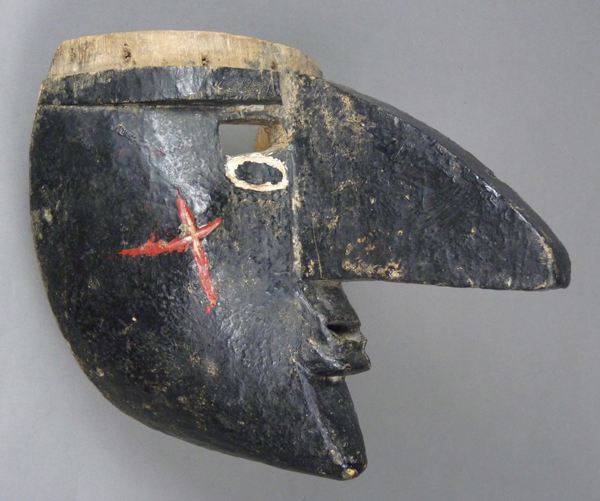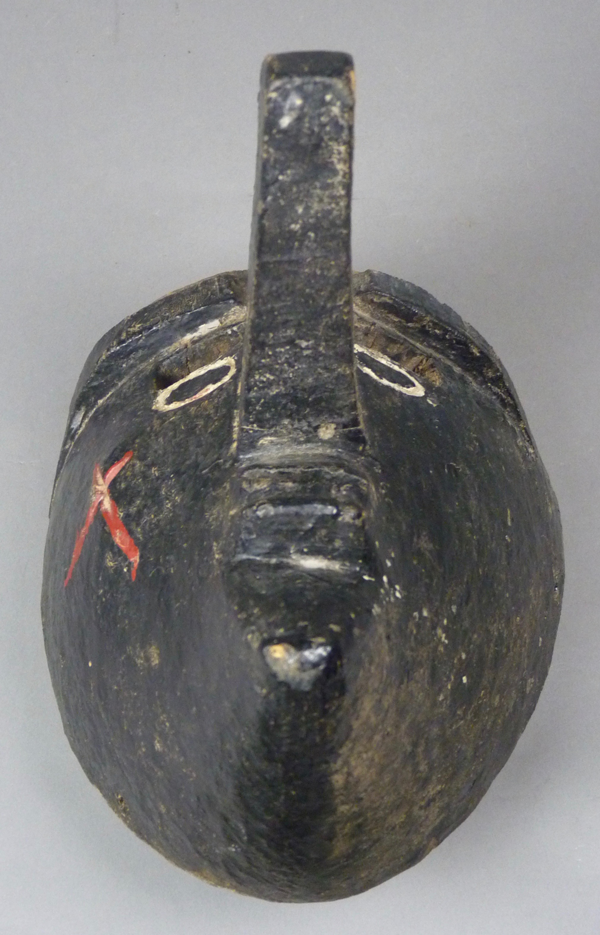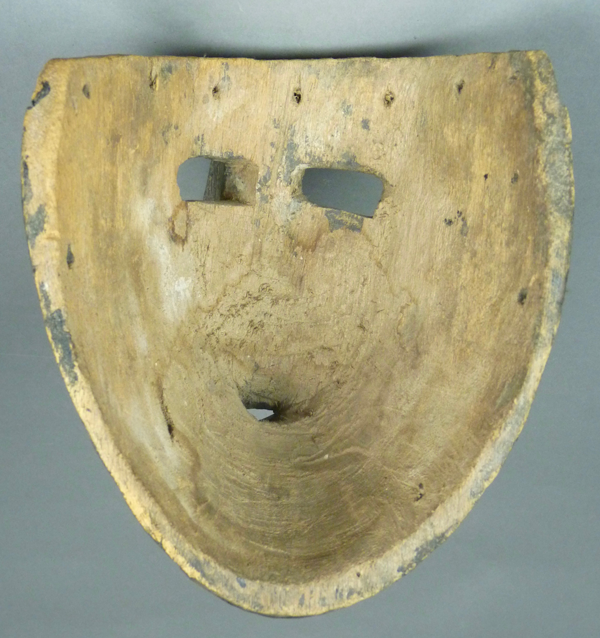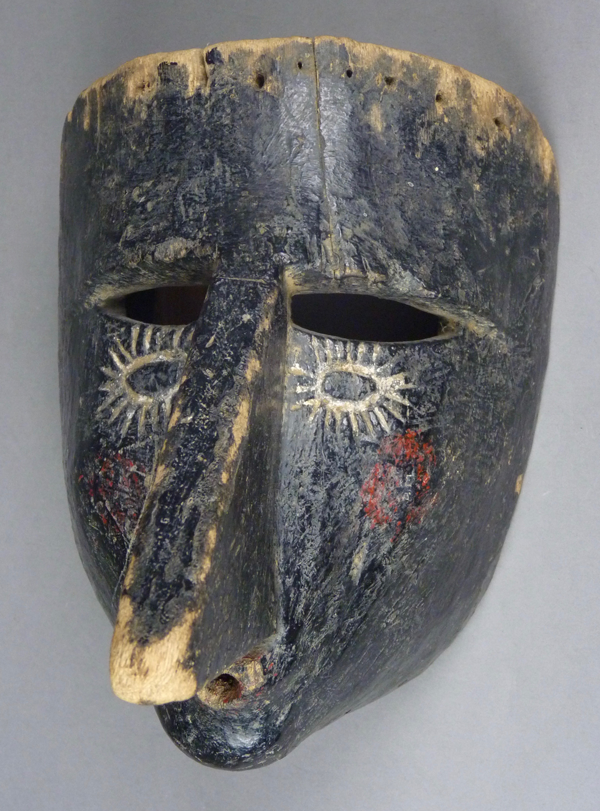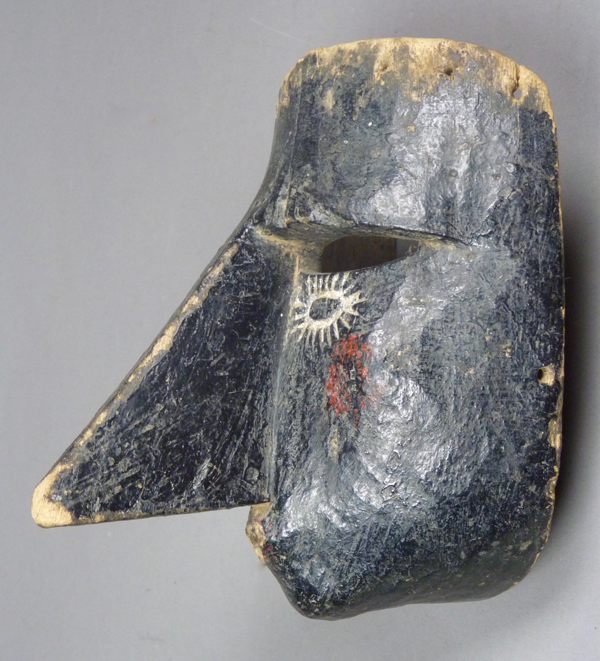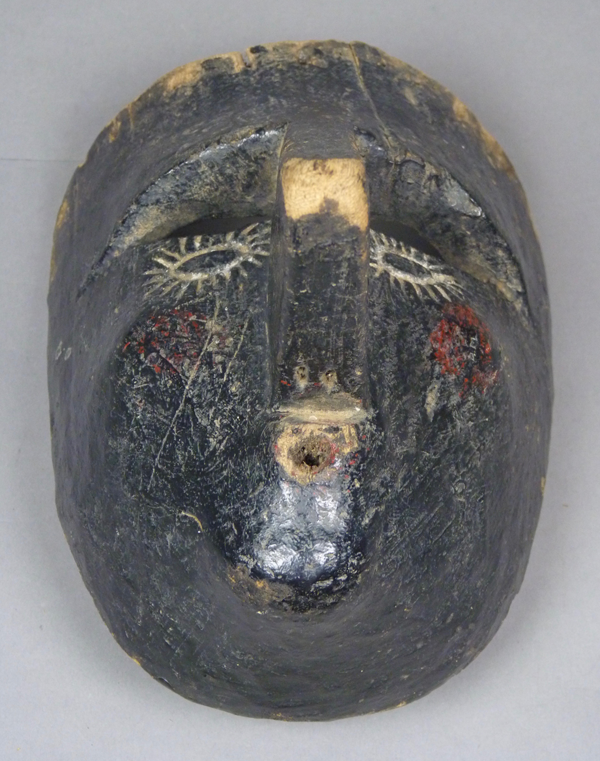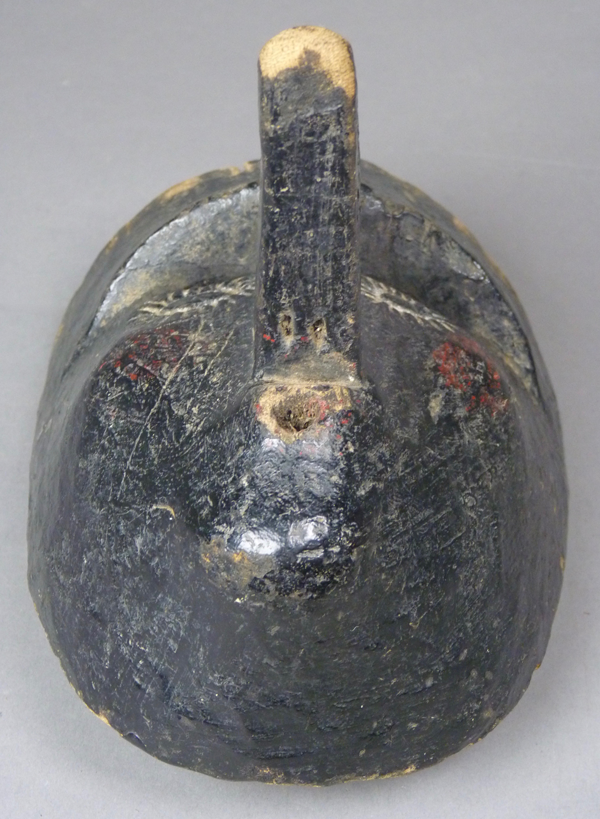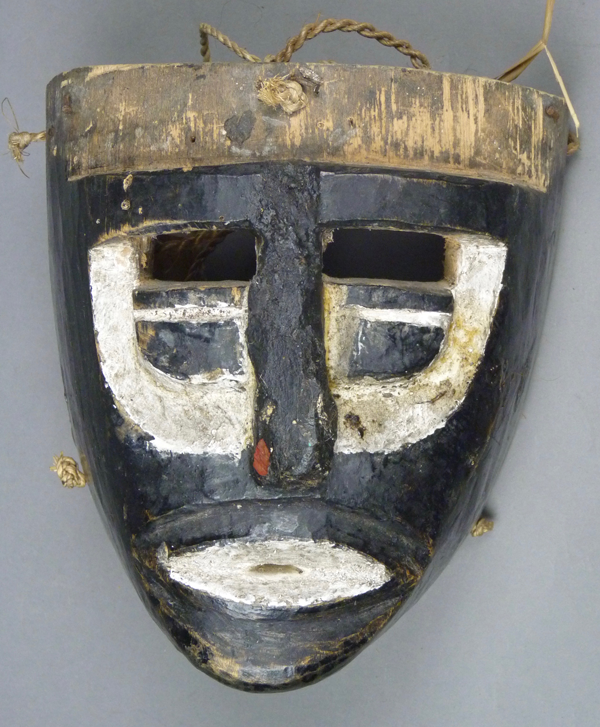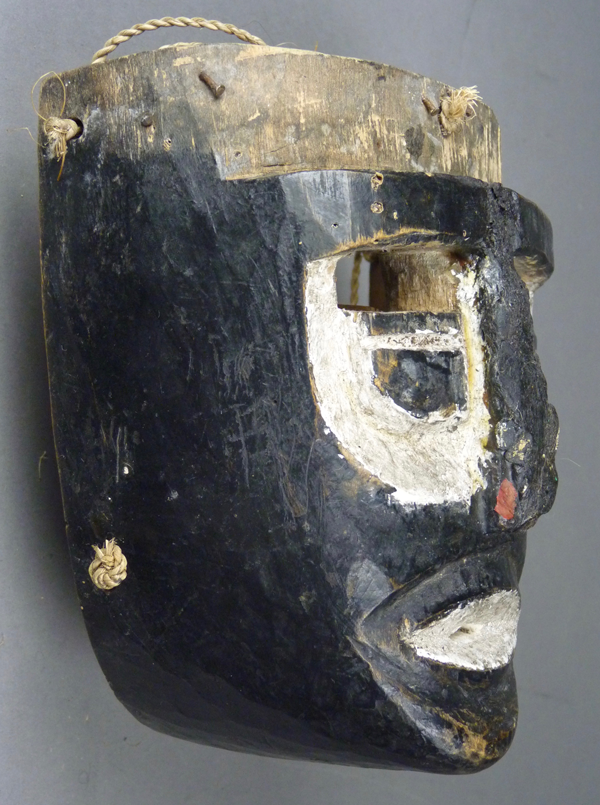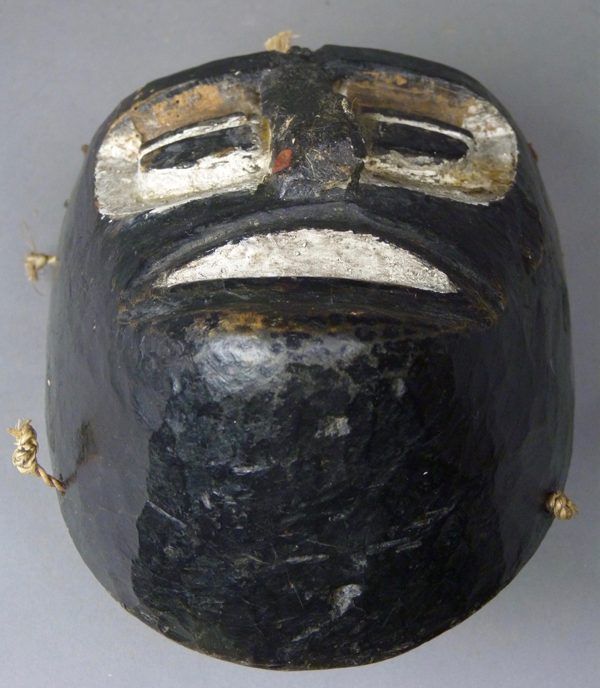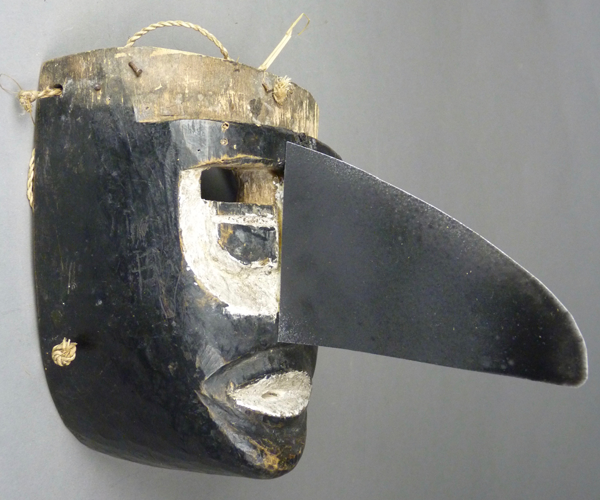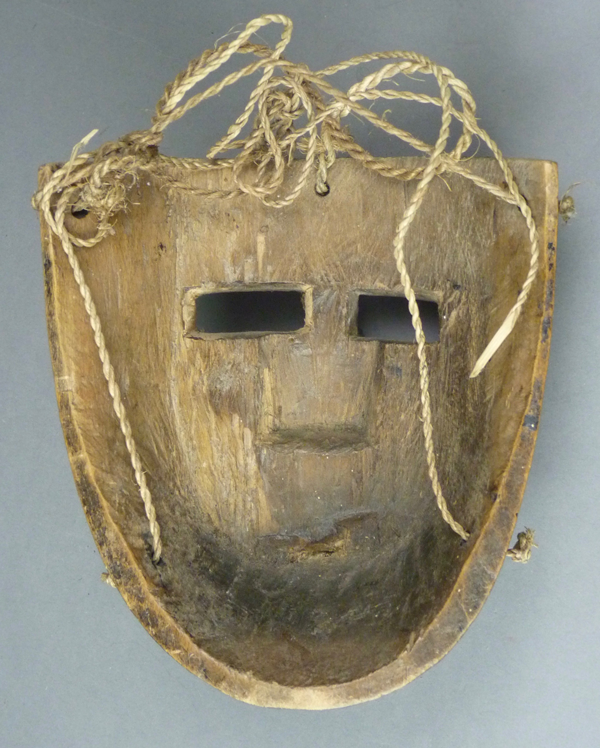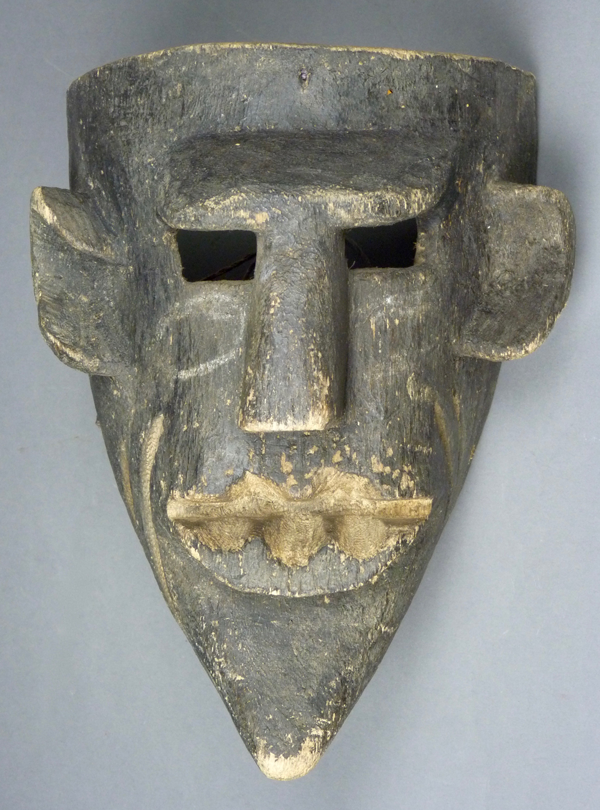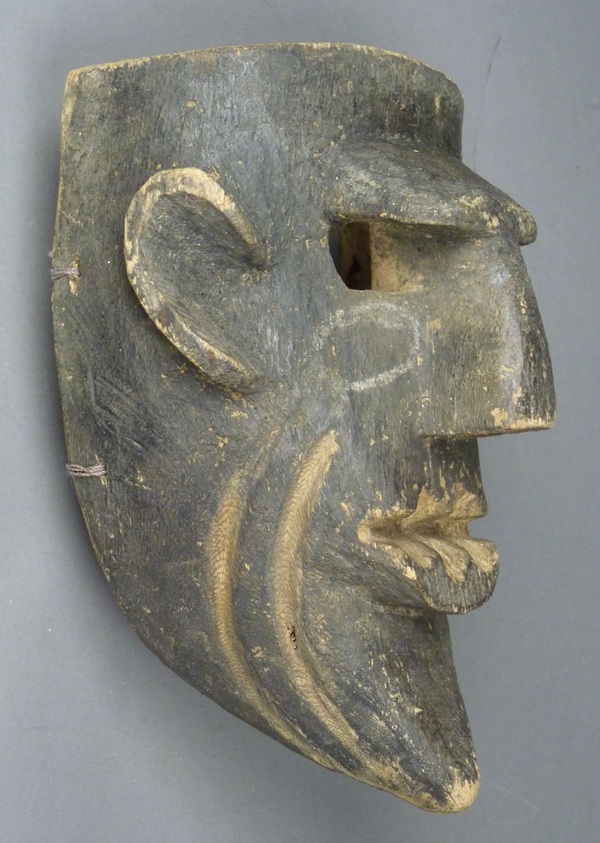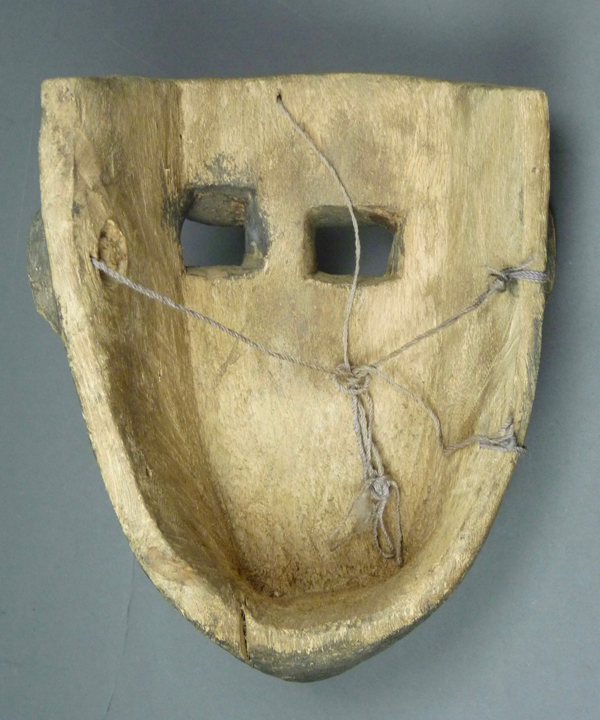Today we will again begin with two masks of similar appearance. What these two have in common is a dramatically oversized nose, reminiscent of pre-Columbian images of Tlaloc or Ehecatl, the god of wind and rain, who was often depicted with a large bird’s beak in place of his mouth. Each also has a small blowing mouth. A third mask may be another example of this type, although a broken nose has made this less obvious. A fourth mask of similar layout in terms of the eyes and vision openings is distinguished by oversized ears and a remarkable mouth, not obviously blowing but wrinkled instead; it reminds me of the rueful expression often depicted on a well-known cartoon figure, Charlie Brown™.
As I noted in an earlier post, scholars have suggested a connection between the Tlacololeros performance and other regional jaguar hunting dances with long standing regional indigenous beliefs and ceremonial practices about the weather. Briefly, these dances seem to reflect a tradition of petitioning for rain. If you are fluent in Spanish, then you may read more about this in a recent book by Rosalba Diaz Vázquez—El ritual de la lluvia en la tierra se los hombres-tigre [The Rain Petitioning Ceremony in the Region of Jaguar-Men], published by Conaculta in 2003.
I obtained the first of these from Robin and Barbara Cleaver in 1987. The rim at the top is recessed to support a sheepskin wig, but this was long gone when I bought the mask.
From the side, we see that this mask has a remarkable nose, exaggerated in length and height. It resembles a bird’s beak. The mouth appears to be blowing out air.
This is a very long nose.
This mask is 8 inches tall, 7 inches wide, and 7 inches in depth.
The back has significant staining from use.
I also got this next mask from Robin and Barbara Cleaver, but not until 1992, five years after the first. This mask actually had its sheepskin wig in place, but moths devoured this at my house and I discarded it. The holes for the attachment of the sheepskin are obvious in this photo.
The blowing mouth on this mask is apparent.
This mask is so beautiful in profile.
The tip of the nose is scuffed from hard use.
This mask is 8 inches tall, 6 inches wide, and 5½ inches in depth.
Now this is a very old and worn back!
The next mask has been a bit of a surprise or mystery. I had purchased this mask in 1995. The tag said that this was a “Negrito from Chapalapa, Guerrero,” and I bought it as such. I find no Chapalapa on the web, instead I find Chacalapa, Guerrero, a place where there are neither Negritos nor Tlacololeros dancing at present, at least not on Youtube™.
Looking at it in the process of writing the present post, I suddenly felt that I was seeing yet another Tlacololero, and one with a blowing mouth at that. Examining it more carefully, I realized that the nose had probably broken off, and then someone had coated the raw edge with pitch or wax as a crude repair. One could imagine this mask in its unbroken form as another example of the Ehecatl type that is exemplified by the first mask in this post. Indeed, it had even come to me with a sheepskin wig that was also destroyed by moths. So now I think this mask is a particularly interesting example of a very rare Tlacololero mask variant. As you will see, the design is highly distinctive.
The sheepskin wig had been attached to the upper rim with tacks, some tacks remain, and the holes of others are still visible. There is a subtle blowing mouth.
The vision openings are rectangular, just like those on the first mask. The eyes are quite distinctive, with raised black areas while the white area around those plateaus is carved away or recessed. There is really nothing left of the nose, except for a lumpy and irregular strip that spans the the area from the ridge above the vision openings down to the space above the lower lip, and this foundation for the nose appears to have been unusually narrow (¾ inches wide).
From this angle, one can see that the nose had a flat bottom with a tapering profile, and the attractive beveled recess around the eyes is quite apparent. The appearance of a nasal opening has been created by a daub of red paint, over the black “restoration.” This mask is 6½ inches tall, 6 inches wide, and 3 inches in depth. The distance from the bottom of the nose up to the top of the rim is 3¼ inches, compared to 4¼ inches on the first mask. So, this appears to have been a lovely child-sized Tlacololero mask.
Here is an altered version of this mask to depict what I believe was its original appearance. This is a cardboard nose.
This mask would be 7 inches deep with this nose.
The back is old and heavily stained. A tiny slit connects the back of the mask with the mouth opening in front. There is a new strap.
The last of today’s Tlacololero masks, which stands in sharp contrast to the other three, is rather comical with its large asymmetrical ears and rueful mouth. I bought this mask from the Cavin-Morris Gallery in 1995, along with the mask with the three crosses on the back that you can see in last week’s post.
Note the rectangular vision openings and the painted eyes under those openings, features we find on the first mask. I suppose that this mask depicts a toothless old man. Is this a blowing mouth? If so, this is not so obvious. This mask would seem to emphasize hearing over any other function.
This mask is 9½ inches tall, 8 inches wide, and 4½ inches in depth.
The staining on the back of this mask is moderate.
Next week I will show another pair of unusual Tlacololero masks that are remarkable for the geometric designs of their noses.


